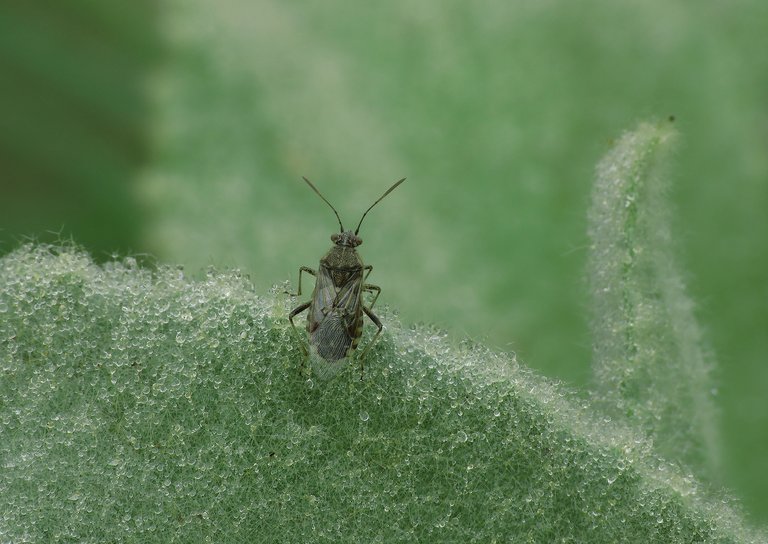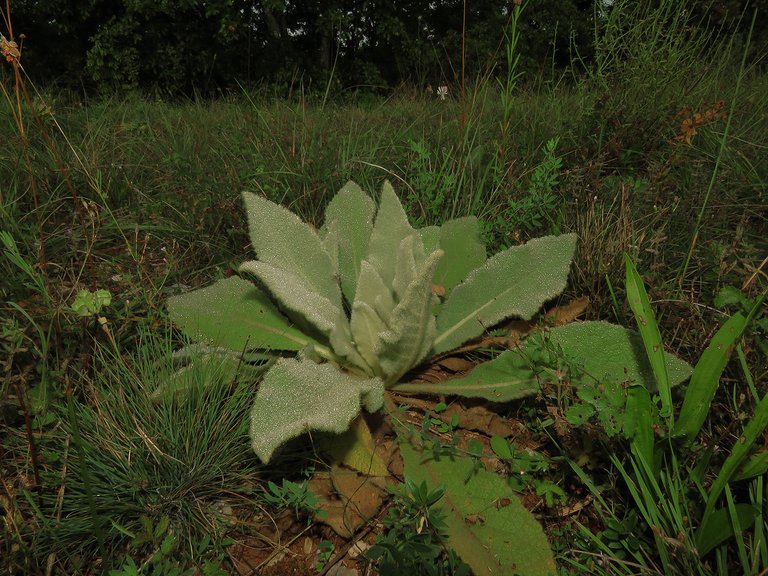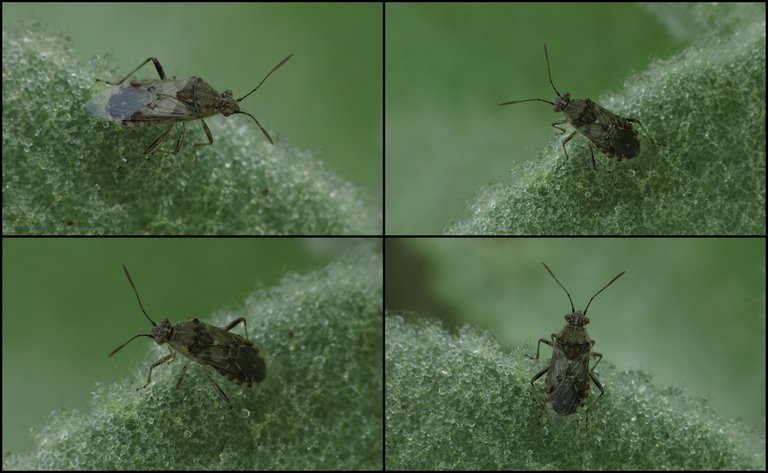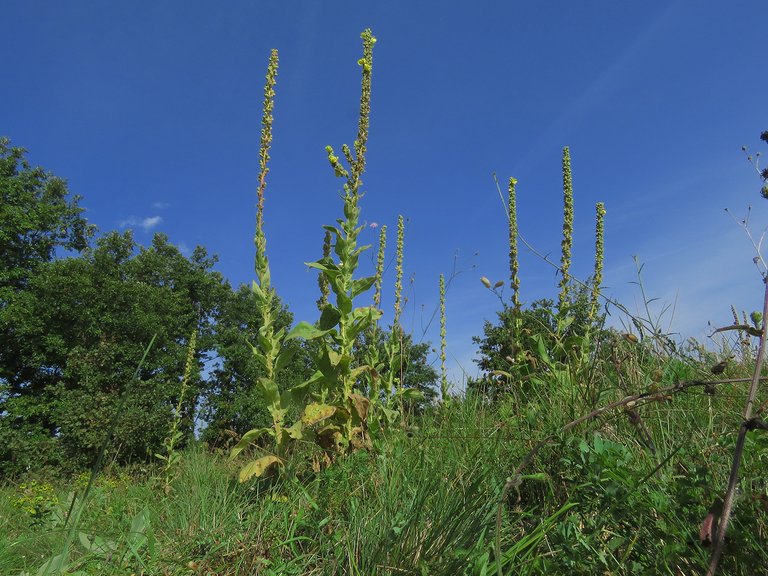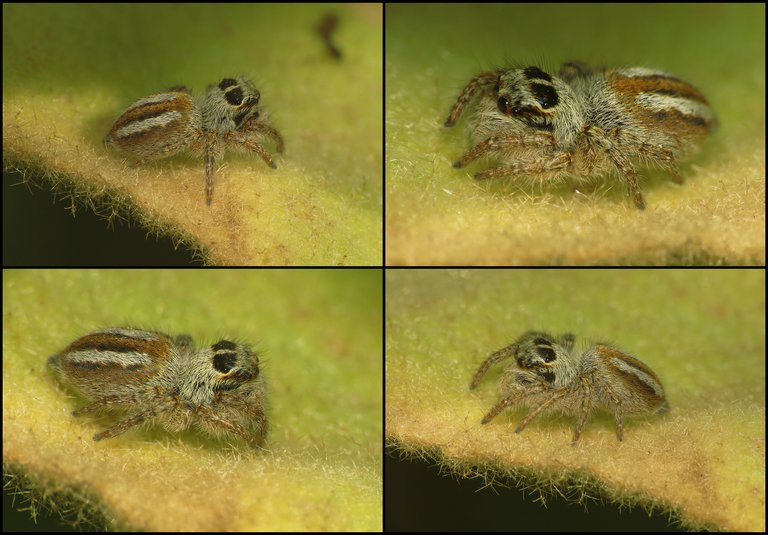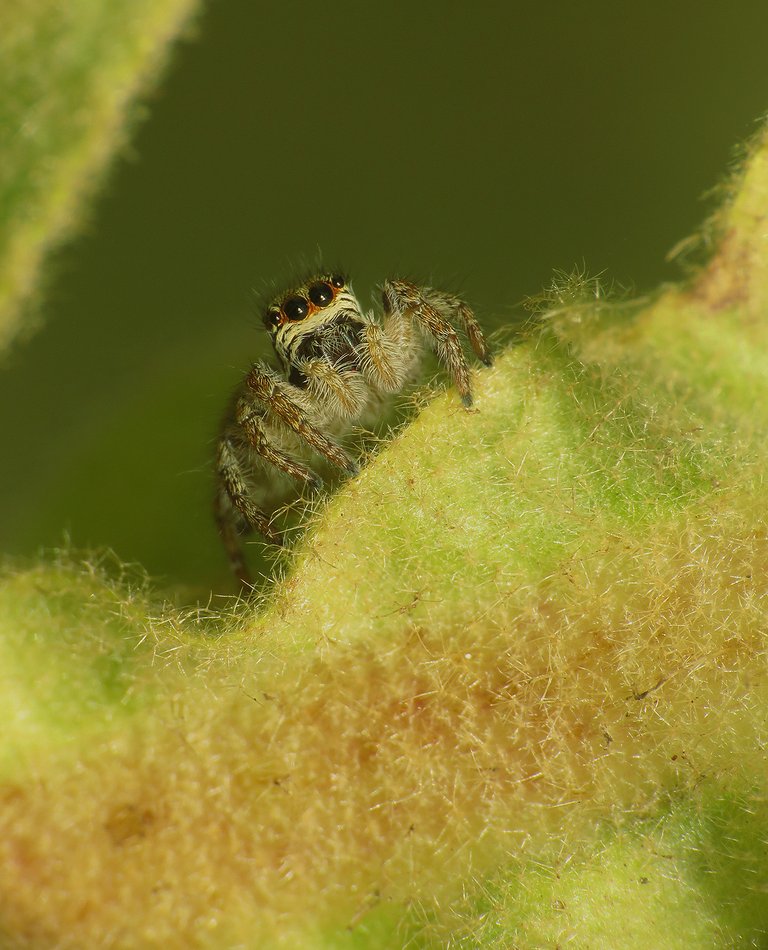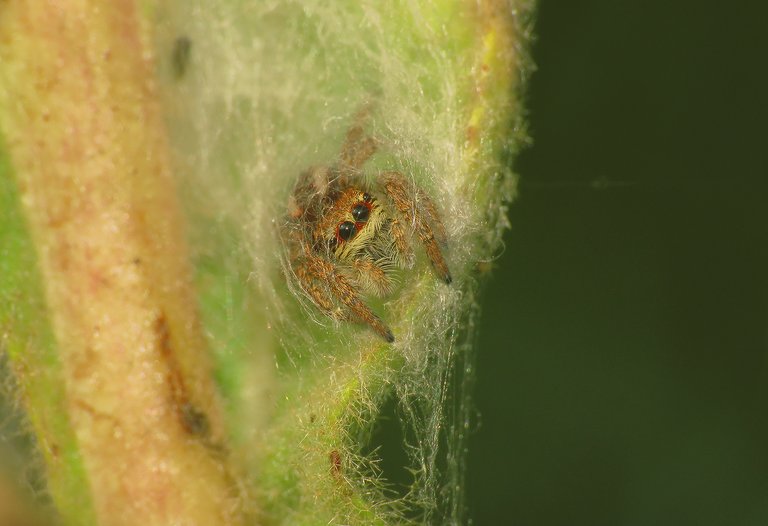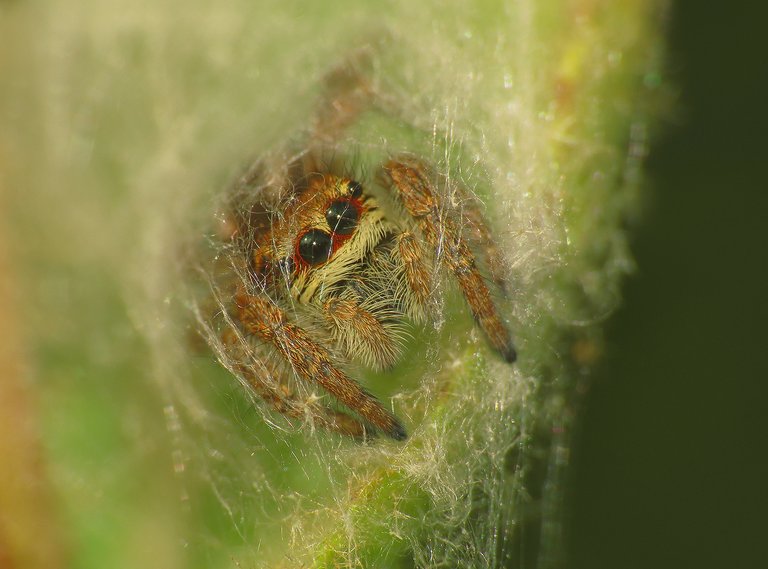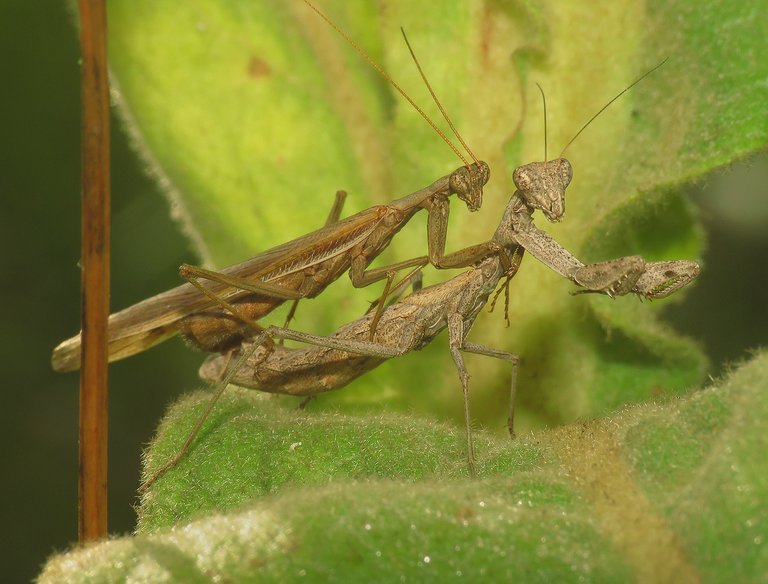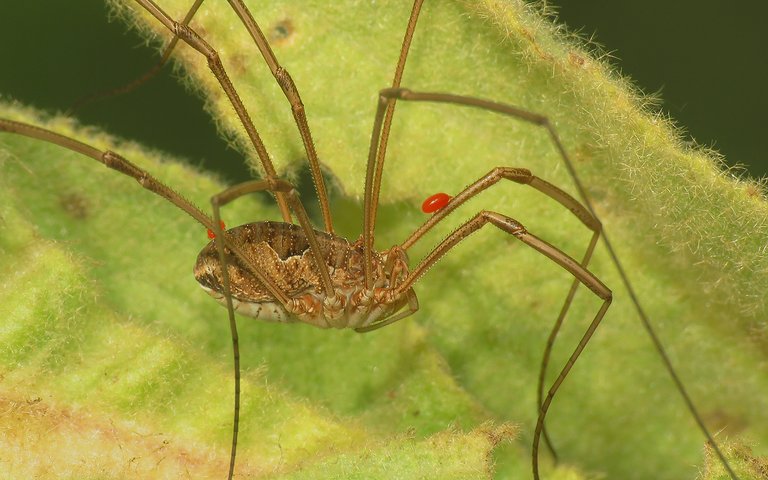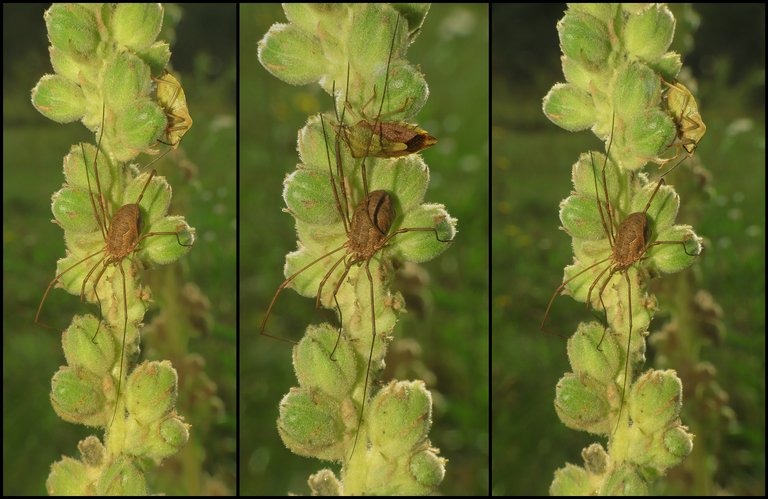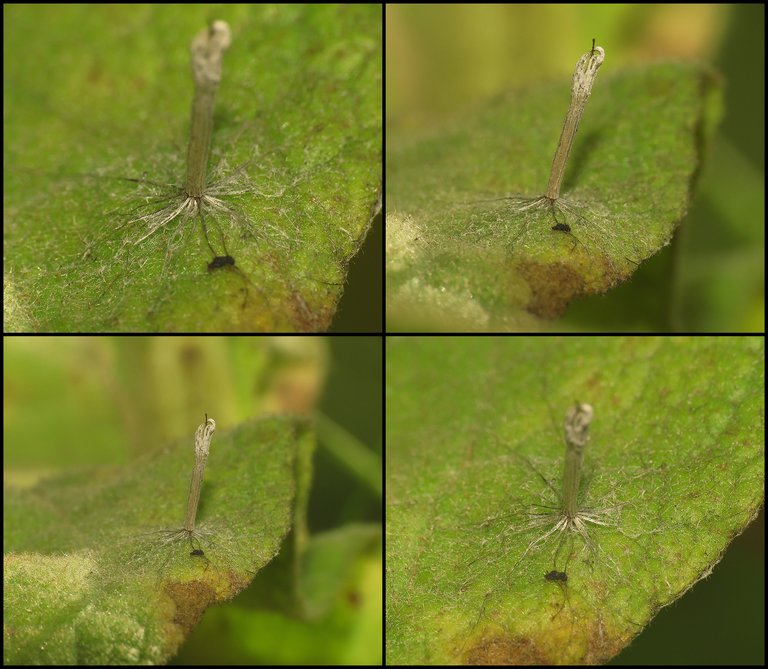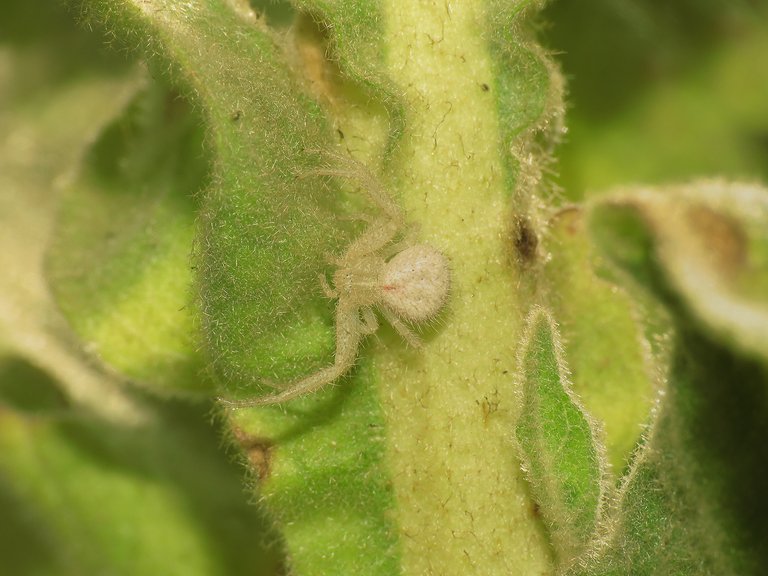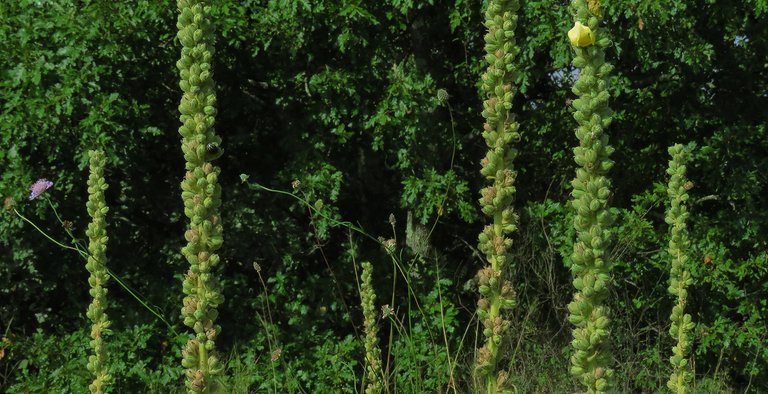Today I drove fifty kilometers to the small town called Zminj. After buying some stuff there, in the monthly outdoor market that happens on Wednesdays at the edge of town, I drove a kilometer or two more toward one of the neighboring villages and stopped by the side of the road to search for something to observe and photograph through my macro lens.
In this opening photograph, you can see the Stictopleurus crassicornis, a bug from the Rhopalidae family. The photograph was taken fairly early in the morning. If you enlarge the picture by clicking on it, you'll see that the wooly leaf on which the bug is standing is covered with a multitude of tiny droplets. That leaf ...
.... belongs to the Verbascum phlomoides, a plant from the Scrophulariaceae family. Here you can see a young plant that has nothing to show besides its leaves. The sun was still low about the horizon, a good chunk of the roadside meadow was therefore in the shade, and the magic created by the morning dew was still glittering on those juicy leaves.
It was too early, too cold, and too humid for the bug to be fast and active. The insect was posing still for these photographs, and that's quite fortunate because I needed a long exposure to get a good shot in low ambient light. In a macro shot, the flash would have ruined the magic created by the many droplets.
This spider ...
... was photographed on one of the tall, completely developed plants in the sunny part of the meadow.
It's a jumping spider. The name of the species is Philaeus chrysops, and this is a female. Males are more showy, with some vivid red body parts.
The same spider is staring directly at you in this shot.
Females are less exuberant, but their inconspicuous colors and markings are very variable. You have seen only one type of Philaeus chrysops female in this series of photographs. In the following shot ...
... you can see a different one.
This female has built a silky nest on the same plant.
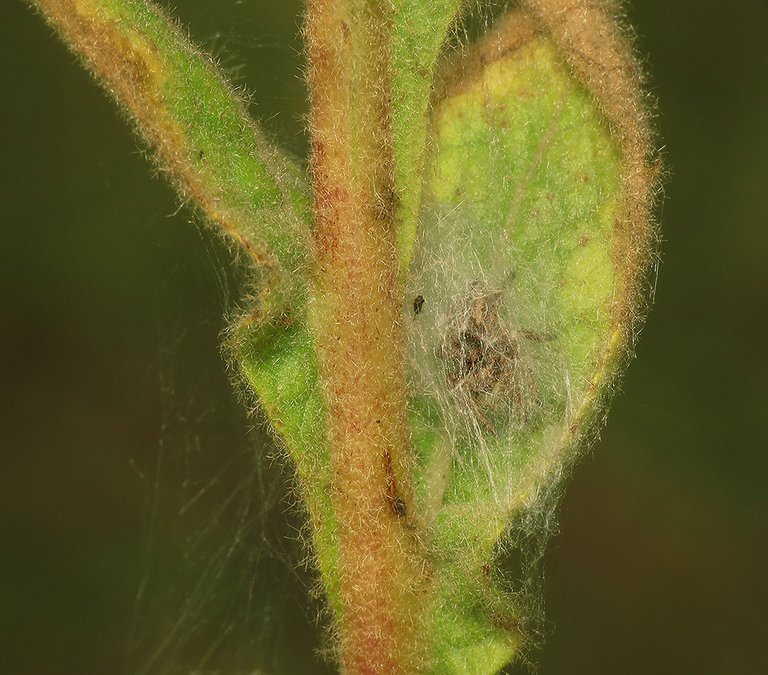
Here you can see how the construction looks from a distance. On the wooly leaf, the silk is less noticeable than it would be on a smooth, hairless one, therefore the nest is better hidden.
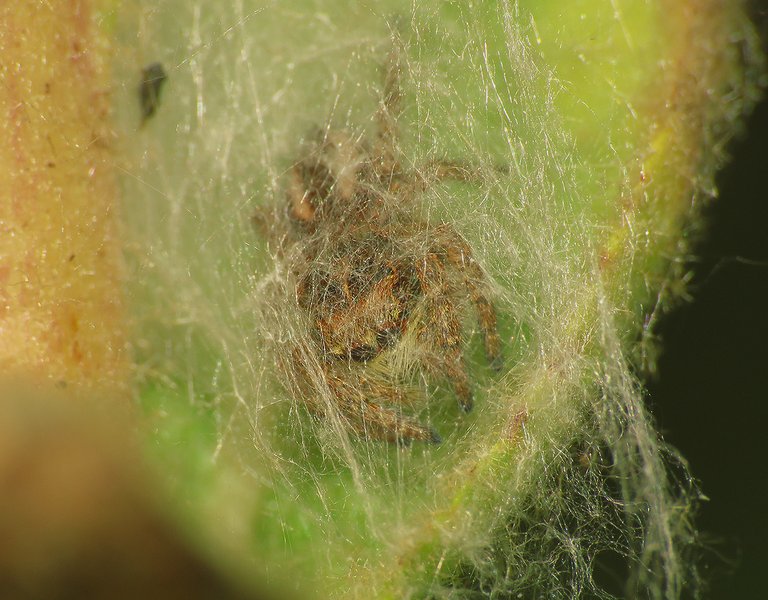
Jumping spiders don't spin webs to catch the prey, but both males and females use the silk in other ways.
Males mainly use it as a thread that helps them navigate the environment, a bit like Spiderman does. Females do that as well, but they also build their nests with it. Generally, jumping spiders have very cute faces, but the cute face of this Philaeus chrysops female surrounded by all that fluffy silk is even cuter than usual.
Verbascum phlomoides is a pretty big herbaceous plant whose basic anatomical features provide many hiding places for small arthropods. You can always find quite a few interesting species among its foliage.
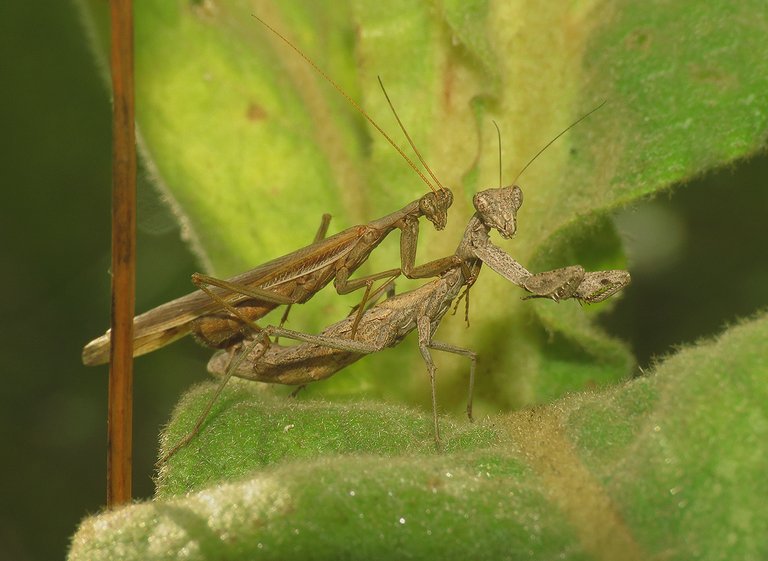
In this unusual scene, you can see two mantises. A male and a female.
The fact that the insects are mating in this and the previous shot is not unusual, they do it regularly, of course. But, if you take a good look at all the details, you'll see that the male looks like a typical winged adult while the slightly bigger female resembles a wingless nymph. That's not how a mating of European mantises (Mantis religiosa) would look and, at first sight, these two looked like European mantises to me. It took me some time to realize that I was looking at different species. These are Ameles decolor, commonly known as Mediterranean dwarf mantis. The females of this species have very short wings.
This long-legged, spider-like arachnid is the Phalangium opilio, a very common harvestman from the Phalangiidae family. In the following photograph ...
... I came closer with the macro lens. The tiny red things on the harvestman's body are arachnids of a different kind. They are larval forms of a mite from the Erythraeidae family. With quite a few very similar species around, I can't tell you which one exactly is this.
With a lot of patience, both from my and the harvestman's side, I was able to come extremely close in this shot and allow you to take a good look at the external anatomy of the tiny larva. In the larval stage, they live a parasitic existence, but adult mites are active little predators.
Here you can see another harvestman of the same kind. While the Phalangium opilio was resting on the flower buds in the middle of the tall stem, a Carpocoris purpureipennis shield bug passed under its long hind legs.
This shield bug was photographed on the top of the plant. The name of the species is Nezara viridula. It's a 5th instar nymph, which means that the immature insect has undergone five moltings. After each molt, the nymph changed not only its size but its appearance as well. Nezara viridula is always present in my garden but the 5th instar nymphs there are different. What's black in the insect shown in the above photograph, is vivid green in those nymphs I encounter every summer in my garden. Never saw this darker version in nature before this encounter, only on the Internet.

Here you can see two Verbascum phlomoides flowers situated near the top of the tall stem. In the following photograph ...
... the focus is on only one of those flowers.
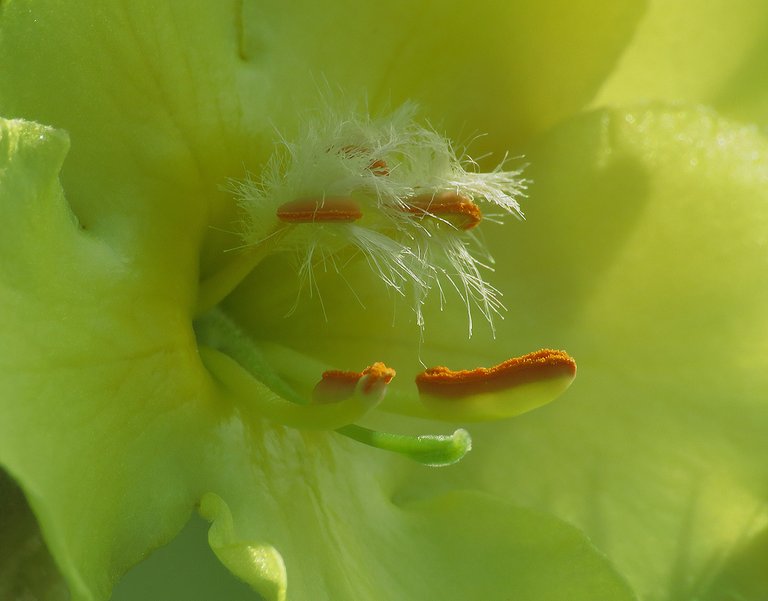
Here I came closer with the macro lens, so you can take a good look at the pistil and anthers in its center.
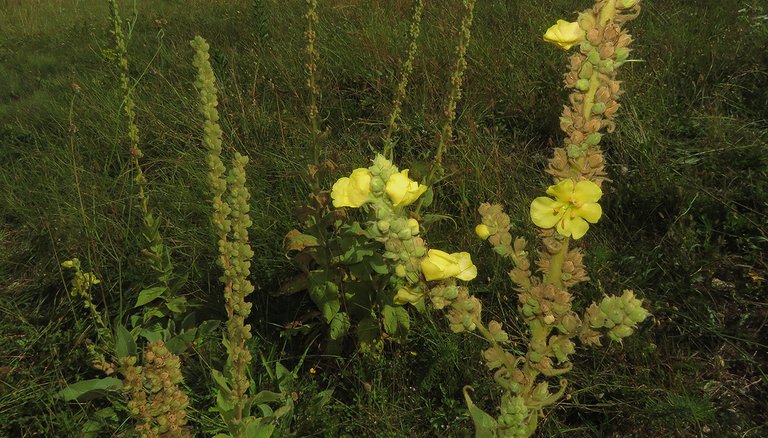
You can see a few more flowers in this wide shot.
The detail shown in this set of four shots was found and photographed on one of the leaves situated low on the plant. Some seed, probably brought by the wind, ended up attached to the hairy surface of the juicy leaf.
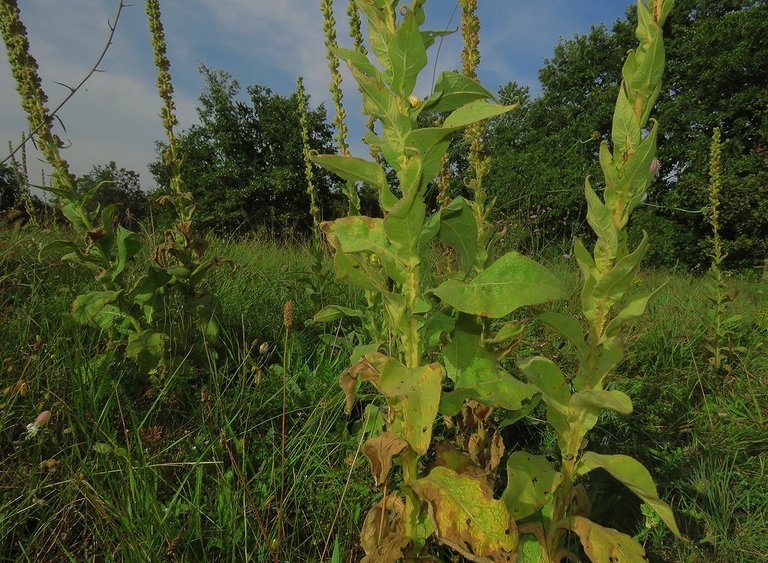
I definitely found more than I expected in an hour or so I spent around the Verbascum phlomoides plants on the meadow by the side of the road.
You can see a well-camouflaged crab spider in this shot.
Heriaeus hirtus is the name of this species from the Thomisidae family.
The following links will take you to the sites with more information about the protagonists of this post. I found some stuff about them there.
https://en.wikipedia.org/wiki/Stictopleurus_crassicornis
https://en.wikipedia.org/wiki/Verbascum_phlomoides
https://en.wikipedia.org/wiki/Philaeus_chrysops
https://en.wikipedia.org/wiki/Ameles_decolor
https://en.wikipedia.org/wiki/Phalangium_opilio
https://en.wikipedia.org/wiki/Erythraeidae
https://en.wikipedia.org/wiki/Carpocoris_purpureipennis
https://en.wikipedia.org/wiki/Nezara_viridula
https://en.wikipedia.org/wiki/Heriaeus_hirtus
